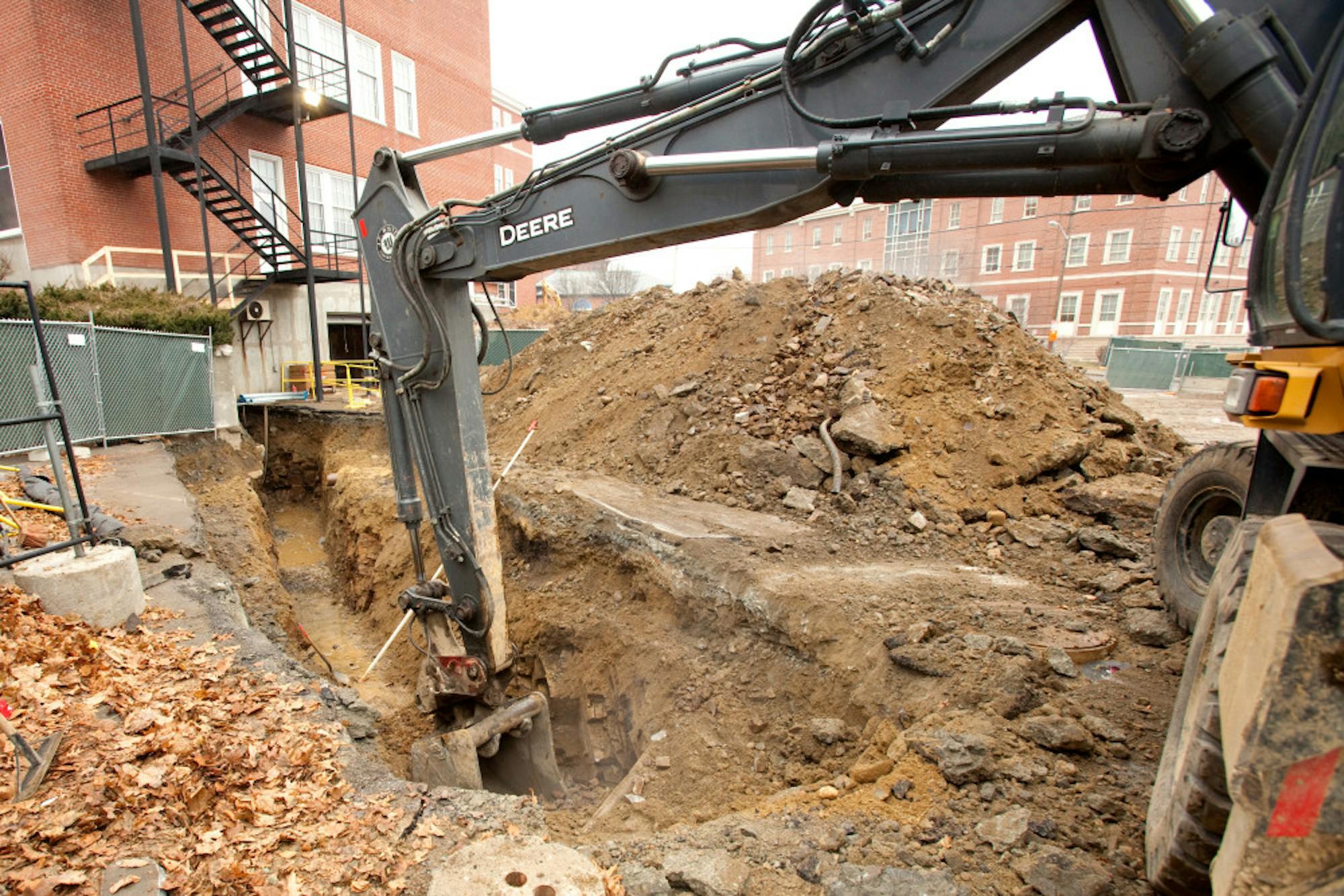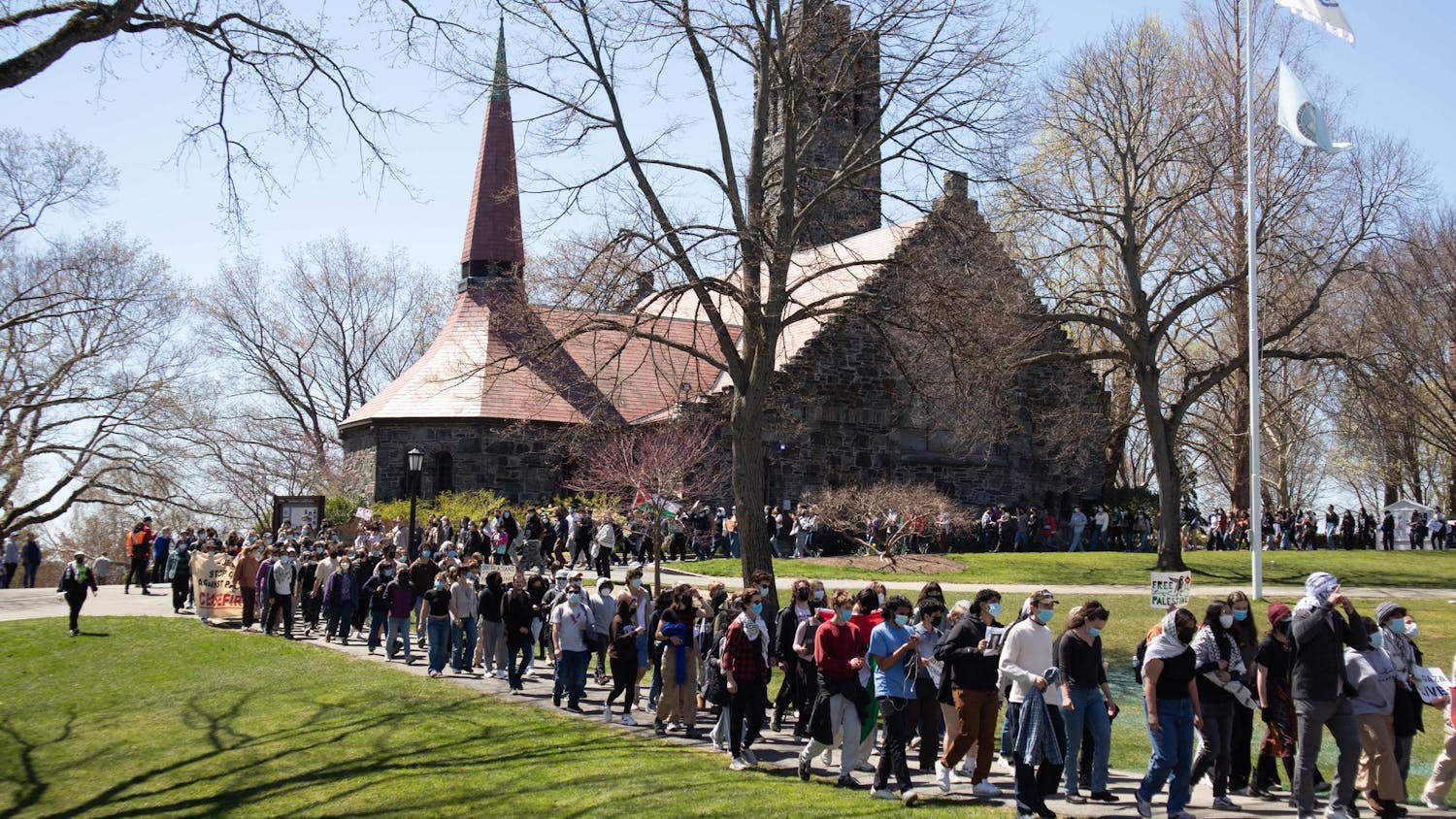The newly completed Science and Engineering Complex (SEC) between Boston and College Avenues will be open to students this semester. The complex consists of a 79,000-square foot addition attached to the existing Robinson and Anderson Halls, transitioning both halls into wings of the SEC, according to the Tufts Construction website.
“The ground floor atrium space [is] … the connective tissue between the new component and Anderson and Robinson,” Barbara Stein, Tufts' vice president for operations, said.
Situated among multiple departments, the SEC is designed to function as a dynamic center of research on campus, in addition to connecting Anderson and Robinson, which will still be used as teaching and office spaces.
“[The SEC] provides a meeting place for students from different majors to interact. I fully expect that the SEC will be a hub of activities, both academic and non-academic,” School of Engineering Dean Jianmin Qu told the Daily in an email.
The Kindlevan Cafe will function as one non-academic meeting place for students. The cafe’s name was chosen by the donors as part of a naming gift and is a mix of their names, Director of Dining and Business Services Patti Klos noted.
The Kindlevan Cafe is set to open within the SEC this fall, according to the Dining Services website, following the closure of nearby Brown and Brew Coffee House on Aug. 11.
“We chose to portray it as if the Brown and Brew was closing and transforming into a new cafe … It’s a new era,” Klos said.
Klos explained that the Kindlevan Café will feel distinct from Brown and Brew.
“The [two cafes] are radically different in feel. The SEC is a very modern, sleek, clean building ... The Brown and Brew had all that wood and it was a more intimate setting,” Klos said.
Klos added that previous employees at Brown and Brew will work at Kindlevan, and that student employees will be needed. Additionally, according to Klos, many of the same food options available at Brown and Brew will be served at Kindlevan alongside new drink options, including freshly-squeezed juices and smoothies.
Bruce Panilaitis, director of the SEC, expressed that the design of the building together with the cafe and atrium will allow for it to become a social hub.
“I can easily see this complex becoming almost a second campus center,” Panilaitis said.
Ashton Stephens, a junior studying electrical engineering and computer science, echoed the idea that the SEC and the new cafe will promote conversation among faculty and students.
“I think overall [Brown and Brew] was kind of a secluded place. This will be more centered," Stephens said. "Ultimately I think [Kindlevan Cafe] will make the campus more social."
Other new spaces in the SEC include four teaching labs, six lab neighborhoods, two imaging suites, a mass spectrometer suite, seven extra meeting rooms and numerous social spaces, according to the construction website.
The SEC also aims to generate many new research opportunities, including those for undergraduates, according to the construction website. In particular, the complex will host interdisciplinary neuroscience and environmental science research.
The biology department has moved from Barnum-Dana Hall into the Robinson Hall wing of the SEC. According to Department Chair Sergei Mirkin, all lab sections for the introductory biology courses will be taught in the SEC labs, as well as many other biology lab courses in the coming semester. The state-of-the-art equipment opens the way for the department to introduce new labs, Mirkin added.
"The facilities allow students to do research that they formerly would only be able to read about,” Mirkin said.
Along with the biology department, the chemical and biological engineering, civil and environmental engineering, math, biomedical engineering and earth and ocean sciences departments will also make use of the SEC, Panilaitis explained. Stein emphasized that the teaching labs, two introductory and two advanced, will be primarily used by undergraduates, such as for lab courses.
While the teaching labs are class spaces, the SEC's six lab neighborhoods are focused on research, Stein noted. A lab neighborhood, she explained, is a set of labs centered around a common research theme to encourage interdepartmental collaboration.
“The idea is that there are faculty from different departments who share synergies and research interests,” Stein said.
One of the new labs will be the Nolop FAST (Fabrication, Analysis, Simulation and Testing) Lab, according to Qu.
“The Nolop lab will be an interdisciplinary space open to all Tufts community members and will serve as a maker-space hub for the campus.” Qu said.
Unlike most of the facilities within the SEC, the Nolop FAST Lab will likely not be completed until May 2018, according to Qu. Stein said that not all of the other lab neighborhoods will immediately be in active use either.
“One of the reasons we’re building the [SEC] is to attract faculty, attract new programs, so if we filled it all up on day one we wouldn’t have that flexibility,” Stein said.
Because space is often in short supply, the opportunity to have space reserved for later use is a rare one, Panilaitis said.
One of the shell lab spaces has already attracted an occupant: the Allen Discovery Center, run by Professor of Biology Michael Levin. That lab was developed after Levin won a significant grant from the Paul G. Allen Frontiers Group, Stein noted.
Stein views the SEC as an asset for Tufts, making the university more competitive in research.
“It’s open to everybody and will be a big amenity to the campus,” Stein said.
Science and Engineering Complex opens to Tufts community

Workers dig a trench that will be used to house telecom cables in the new complex.





